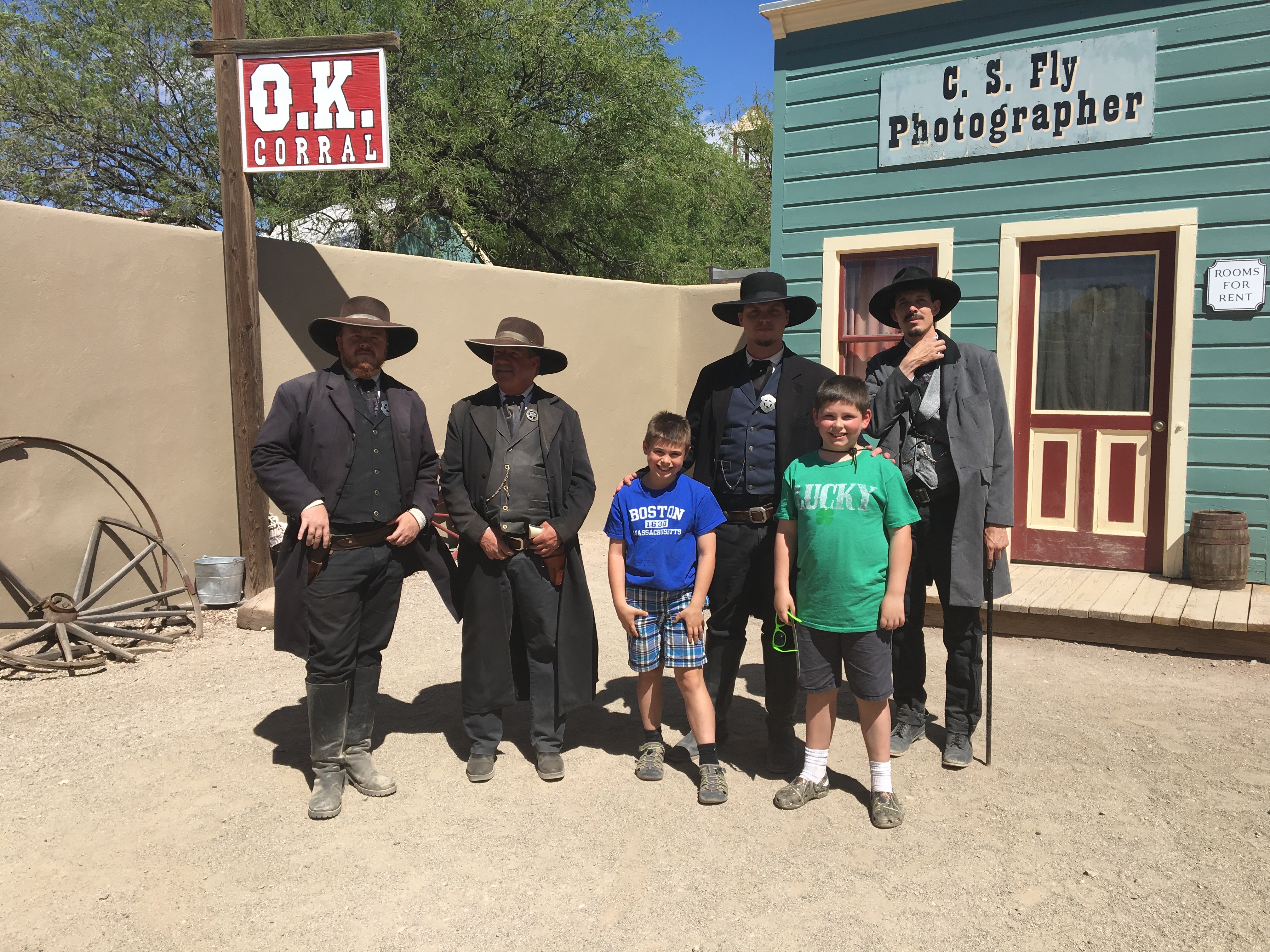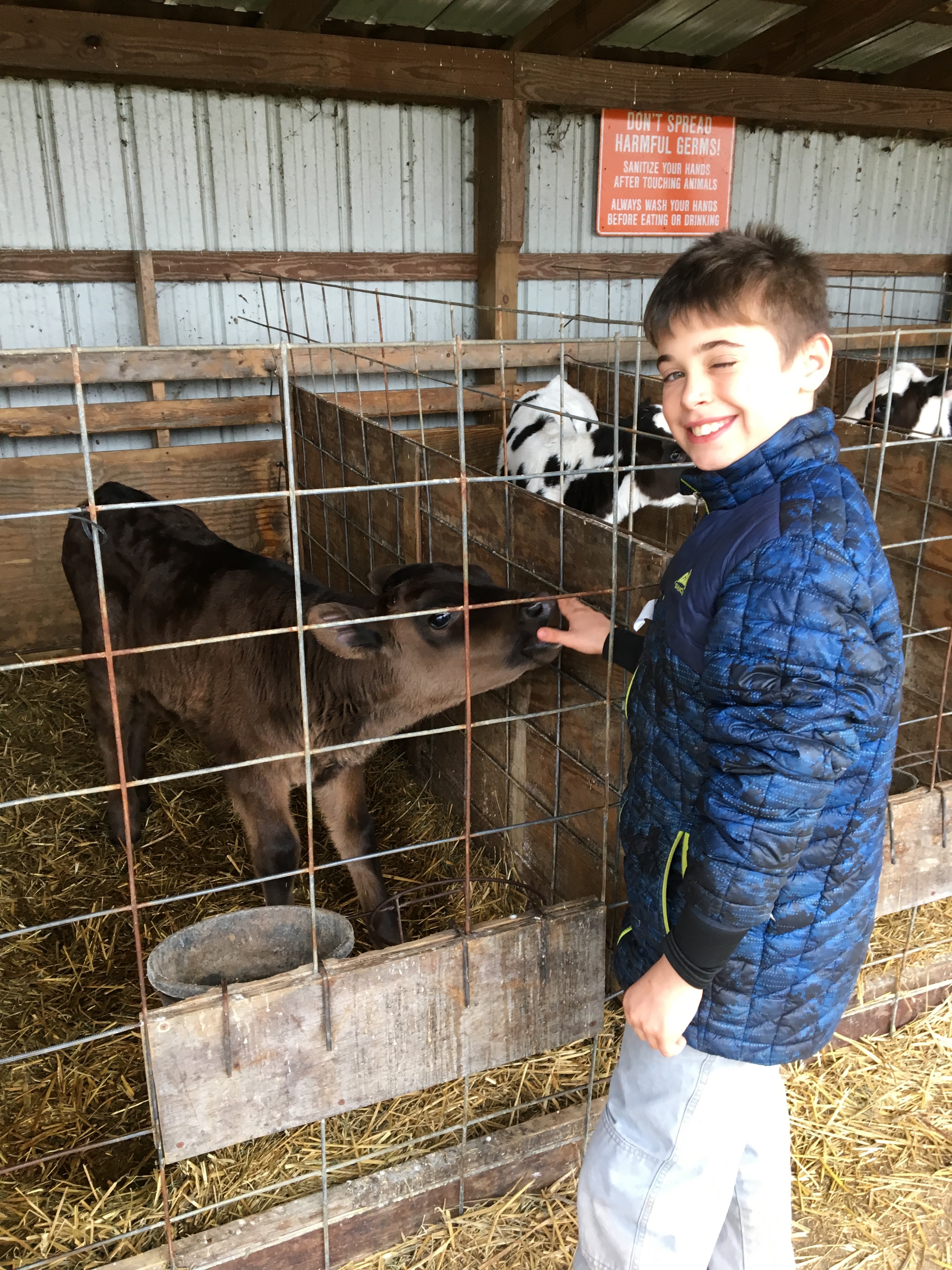“Road Schooling American History: The Civil War” by Heather S. Cole
We moved to the Shenandoah Valley from the Boston area in 2014. In our first six months, I heard more discussion about “the war between the states” than I had in nearly 20 years in New England. I came to understand that some of this was cultural, but a lot of the reason for a continued interest in the war was purely geographical. Virginia was both literally and figuratively at the center of the Civil War and, even more than 150 years later, the effects are still being felt here in ways that they just aren’t in the north. As I tried to wrap my head around the debate over Confederate flags and statues of dead generals, I realized that there was a lot that I still didn’t understand about the Civil War.
Fortunately, I had a 7-year-old boy who was obsessed with guns and soldiers and warfare. Civil War reenactments were the perfect way to combine his interests and mine. Thus, the Civil War ended up being the first subject that we homeschooled, before we officially pulled him from public school. Our spines for this class were: a map of Virginia, a list of the major battles of the Civil War and a print-out of upcoming reenactments. Here are some of our favorite sites…
Gettysburg/Antietam/Harpers Ferry
We started our Civil War exploration just north of the Virginia border with a whirlwind weekend-long visit to Gettysburg, Antietam and Harpers Ferry. It was, in retrospect, nowhere near enough time. At Gettysburg National Military Park (Gettysburg, PA) we opted for the tour package that included the museum, film and cyclorama exhibit. That, along with a quick drive-through of the highlights of the battlefield, was all we were able to accomplish in one day. There were a myriad of ranger programs and other exhibits that we could have seen; but we just ran out of time.
The Antietam National Battlefield (Sharpsburg, MD) is a smaller site, so here the kids were able to walk around and get a better idea of the scope of the battle. We were there during one of their living history weekends, so the kids were excited to pet the reenactors’ horses and watch firearm demonstrations. The kids also earned their Junior Ranger badges by completing several activities there.
However, the highlight of our weekend was Harpers Ferry (WV). Located at the intersection of the Potomac and Shenandoah Rivers, the picturesque town comprises both the Harpers Ferry National Historical Park and Harpers Ferry Historic District. The National Park includes several Civil War-era museums, including the site of abolitionist John Brown’s failed 1859 slave rebellion. The Historic District features beautifully-restored 19th century homes and stores, including my kids’ favorite: an ice cream parlor. The Appalachian Trail also cuts through Harpers Ferry, and there are local outfitters that offer biking, hiking and kayaking supplies.
We made a second trip to Gettysburg later that summer to attend the Gettysburg Anniversary National Civil War Battle Reenactment. Run by a group unaffiliated with the National Park, this reenactment is claimed to be the largest in the country. It certainly was the largest and most well-organized reenactment that we’ve attended. In addition to battle reenactments, there were both Union and Confederate encampments, period shops, musical performances and kids activities. (Just be aware that it is a 100% outdoor event and tickets are non-refundable.)
Shenandoah Valley
Although often overlooked, the Shenandoah Valley has a wealth of Civil War sites: Cedar Creek, New Market, Rockingham County, Waynesboro, Lexington. We’ve enjoyed visiting these sites because they tend to be less crowded, giving kids more of an opportunity to interact with museum staff and reenactors.
One of my favorite Civil War sites in the Shenandoah Valley is the Confederate Breastworks Interpretive Trail in the George Washington National Forest, west of Staunton. The isolated half-mile trail along the top of Shenandoah Mountain has interpretive signs with excerpts of letters from a Confederate soldier to his wife, giving hikers a sense as to what it might have been like to be a soldier marching, sleeping and fighting in the mountain wilderness.
My kids preferred our day trip to Lexington where we visited the Virginia Military Institute Museum, home to an extensive antique firearm collection and the taxidermied hide of Stonewall Jackson’s horse.
Educational Programs
Joining a reenacting regiment is undoubtedly the best way to really experience life of a Civil War soldier. If your family is the type that enjoys sleeping under the stars, eating over a campfire and marching in wool clothing in 90 degree weather—then you can find information on regiments at any reenactment or through the sidebar links. I, however, wanted to sit in air-conditioned comfort while my children enjoyed those adventures.
So I was happy to discover the day camps at the Virginia Museum of the Civil War in New Market. The museum and surrounding battlefield are owned by the Virginia Military Institute, whose young cadets fought in the 1864 battle. Their week-long Civil War Day Camp is focuses on giving students the experience of a Civil War soldier—complete with marching drills and sampling of hardtack. My boys attended the camp for three summers and their favorite experiences included learning period songs and playing war with wooden muskets amongst the historic houses on the farm. I was especially pleased about the reasonable cost of the camp.
Another organization that offers a variety of educational programs about the Civil War is the American Battlefield Trust. My son and I spent a weekend in Washington, D.C. participating in a day-long reenactment that was part of their “Generations” initiative to interest young people in history. The free program also included a period lunch.
Since many of the Civil War sites are owned by the National Park Service, I also wanted to remind readers about their Every Kid in a Park program. Any fourth grader (or homeschool equivalent) can get a free one-year national park pass. Visit everykidinapark.gov for details.
***
Historic Sites:
Antietam National Battlefield, Sharpsburg, MD: nps.gov/anti
Confederate Breastworks Interpretive Site, West Augusta: fs.usda.gov/recarea/gwj/recarea/?recid=73663
Gettysburg Anniversary National Civil War Battle Reenactment: gettysburgreenactment.com
Gettysburg National Military Park, Gettysburg, PA: nps.gov/gett
Harpers Ferry National Historical Park, Harpers Ferry, WV: nps.gov/hafe
Historic Harpers Ferry, Harpers Ferry, WV: historicharpersferry.com
Virginia Military Institute Museum, Lexington: vmi.edu/museums-and-archives/vmi-museum
Virginia Museum of the Civil War, New Market: vmi.edu/newmarket
Favorite Books:
Alphin, Elaine Marie. Ghost Cadet. Scholastic Paperbacks (1992).
Beitler, Margaret Bigham. Jimmy at Gettysburg. Horner Enterprises (1992).
Fletcher, Susan. Dadblamed Union Army Cow. Candlewick (2007).
Greenwood, Barbara. The Last Safe House: A Story of the Underground Railroad. Kids Can Press (1998).
Raven, Margot Theis. Night Boat to Freedom. Square Fish (2008).
Other Resources:
American Battlefield Trust: battlefields.org
Civil War Reenactment HQ: reenactmenthq.com
Civil War Traveler (reenactment schedule): civilwartraveler.com
National Park Service Every Kid in a Park program: everykidinapark.gov
Shenandoah Valley Battlefields: shenandoahatwar.org





 “Roads Scholars: Caving in Virginia” by Heather S. Cole
“Roads Scholars: Caving in Virginia” by Heather S. Cole “Road Tripping American History: Westward Expansion” by Heather S. Cole
“Road Tripping American History: Westward Expansion” by Heather S. Cole On a trip through Vermont many (pre-kid) years ago, my husband and I stopped at so many dairies, farm stores and breweries that we joked that we could live for a week on free samples. While I don’t advocate taking advantage of small, family-run businesses, I do advocate eating local as much as possible. And it’s so much more fun if you can see how your food is made, or even make it yourself. In our homeschool, we count food field trips as science, home economics, math… even history. To that end, here are some family-friendly destinations for your own food tour across Virginia.
On a trip through Vermont many (pre-kid) years ago, my husband and I stopped at so many dairies, farm stores and breweries that we joked that we could live for a week on free samples. While I don’t advocate taking advantage of small, family-run businesses, I do advocate eating local as much as possible. And it’s so much more fun if you can see how your food is made, or even make it yourself. In our homeschool, we count food field trips as science, home economics, math… even history. To that end, here are some family-friendly destinations for your own food tour across Virginia.